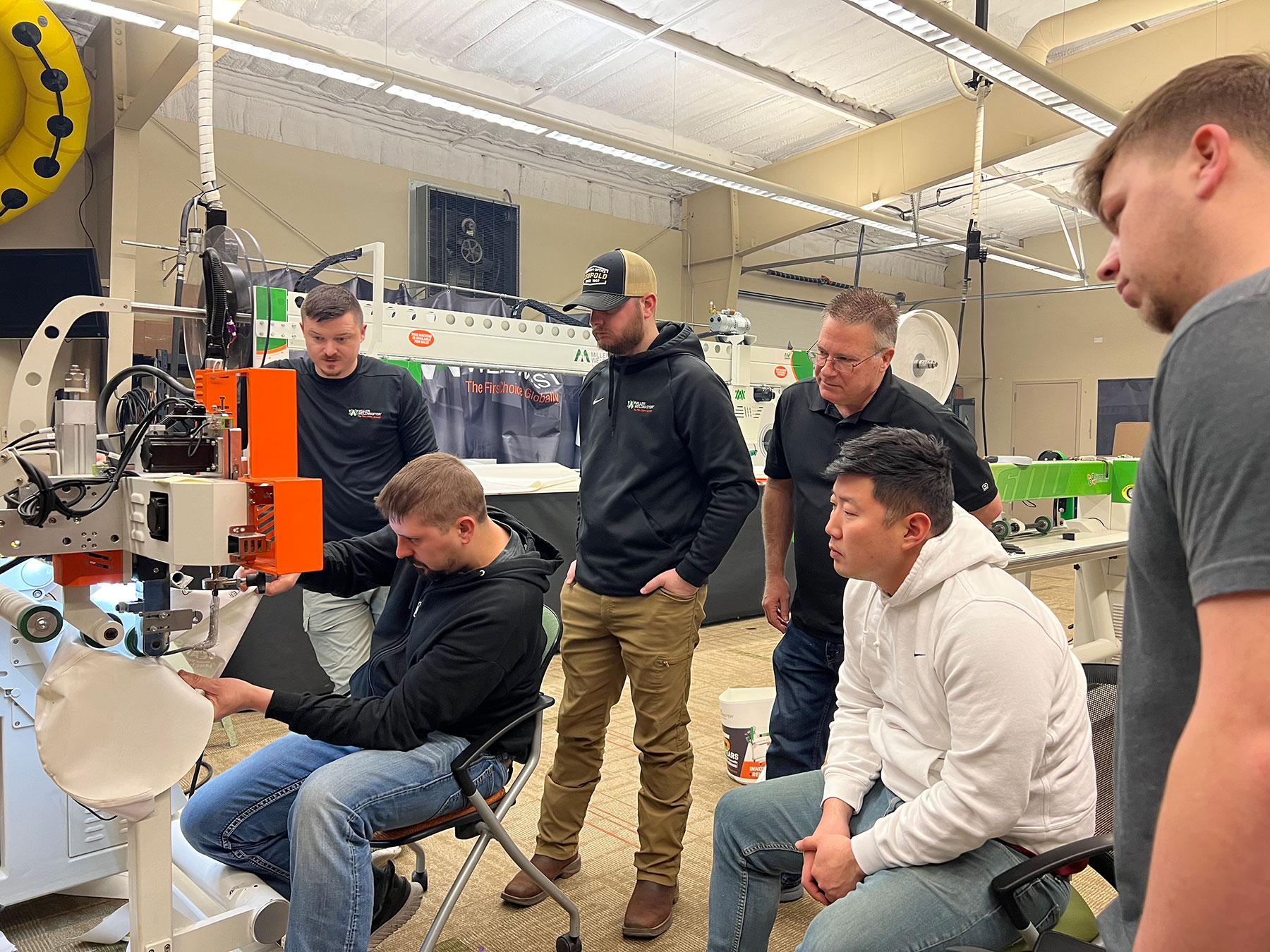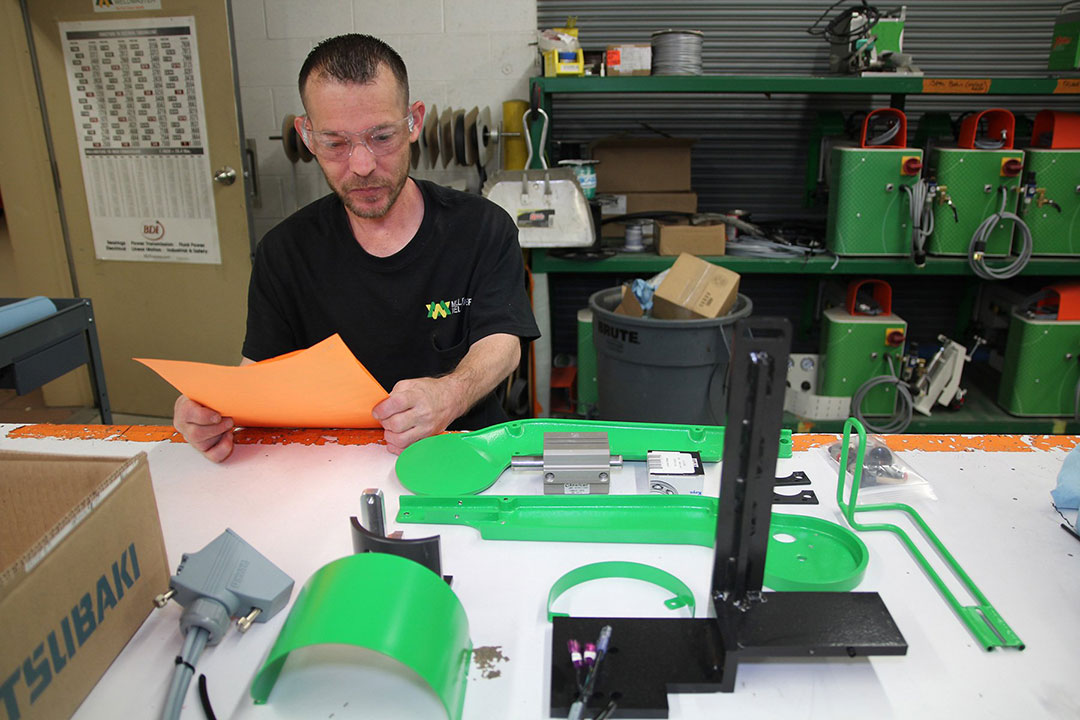Whether you’re in the business of tarps, inflatables, packaging and sealing, or awning and shades manufacturing, industrial fabric welding helps improve material seam strength, ultimately increasing product lifespan. Industrial fabric welding fuses together a variety of thermoplastic, acrylic, vinyl, PVC and other materials, so finding the right technology can be challenging if you’re not familiar with the options.
There are four basic types of material welding technologies that you’ll come across in your search for the perfect solution. Each technology has unique benefits and perform best in certain environments. Keep reading to learn more about the four different types of fabric welding technologies, and see which solution suits your needs best.
1. Industrial Hot Air Welding
Hot air welding uses a combination of precise heat, speed, and pressure to create secure fabric seams. By using hot air, machines can fuse thermoplastics together to create long-lasting seams.
Hot air welder specifications:
- Hot air welders use tightly controlled temperatures ranging from 350 F to 1,350°F.
- Seal up to two surfaces at one time.
- Generally used on a wide range of materials and thicknesses.
Benefits:
- Ideal for free-hand designs, allowing for more unique shapes and requirements.
- Users have the ability to start and stop throughout the welding process.
- Works well for applications requiring three-dimensional products such as inflatables and rafts, without special tool and dies.
While manufacturers across a variety of industries depend on hot air welding, this technology is best suited for inflatables, tarps, signs and billboards, packaging (bags), rafts, jump houses, tents and structures, and awnings.
Learn more about hot air welding, and our lineup of hot air welders.
2. Hot Wedge Welding
Hot wedge welding also relies on extreme heat and pressure to join materials. However, with hot wedge welding, a literal wedge that heats up is positioned at the welding point. Then, the material is pulled across the heated wedge to create a seam.
Hot wedge welding specifications:
- Ideal for long, continuous seams.
- Hot wedge welder temperatures range from 700°F to 920°
- Works with industrial thermoplastics such as polyurethane, polypropylene, polyvinylchloride (PVC) and polyethylene.
Benefits:
- Because no air is blown to create seams, this technology is also ideal for films.
- Hot wedge technology is a quieter welding solution.
- Hot wedge technology also works well with very thick materials and can weld multiple layers of fabric.
Learn more about hot wedge welding technology and our lineup of machines.
3. Impulse Welding
Impulse welding is considered a “hot-bar method” of welding. Impulse welding machines are equipped with two impulse-heating bars that apply heat and pressure to fabric as it is pulled through the top and bottom bars.
Impulse welding specifications:
- Impulse welders work best for project with low- to medium-thickness heat sealable materials, as well as acrylic fabrics for awning and marine use.
- Materials such as polyethylene, polypropylene and polycarbonate work well with impulse welding.
- Consumes less energy than other welding technologies by heating up nearly instantly.
Benefits:
- Lower risk of injury, as the machine’s heating elements are not hot at all times.
- Produce clean seams that require simple welding parameters.
- Impulse welding machines can also perform miscellaneous tasks including joining panels, applying reinforcement or zippers to fabrics, and creating industrial folds or pockets.
Learn more about impulse welding machines and our available machines.
4. Radio Frequency
Radio frequency (RF) welding, also known as dielectric welding, is the process of welding materials together using radio frequency energy. This fabric welding style heats materials from the inside out.
Radio frequency specifications:
- Radio frequency can weld all thermoplastic materials that contain polarized molecules.
- There is no limit on material thickness when using radio frequency technology.
- RF welding produces continuous welds measuring many feet long, as well as very small.
Benefits:
- RF welding allows users to hit the same area of the weld more than once, while other technologies do not.
- Specialized dies are available for intricate welds.
- Performs well with products that require unique shapes.
For more information on RF welding.
Let Us Help You Pick the Best Fabric Welding Technology for Your Operations
To decide which technology is best suited for your business, connect with a Miller Weldmaster technician today. Our team is happy to test your own materials on our machines to help decide which technology is right for you.





